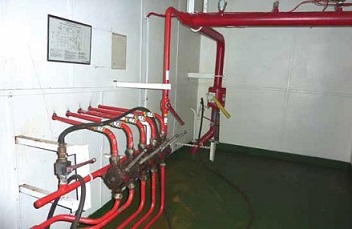
CO2 Fire Extinguishing Installations for Ships Machinery Spaces
A carbon dioxide flooding system is used to displace the oxygen in the
protected space and thus extinguish the fire. The carbon dioxide is
stored as a liquid under pressure in cylinders.
The volume of space to be protected determines the number of cylinders required. A common battery of cylinders may be used to protect both cargo holds and machinery space.
The volume of space to be protected determines the number of cylinders required. A common battery of cylinders may be used to protect both cargo holds and machinery space.


